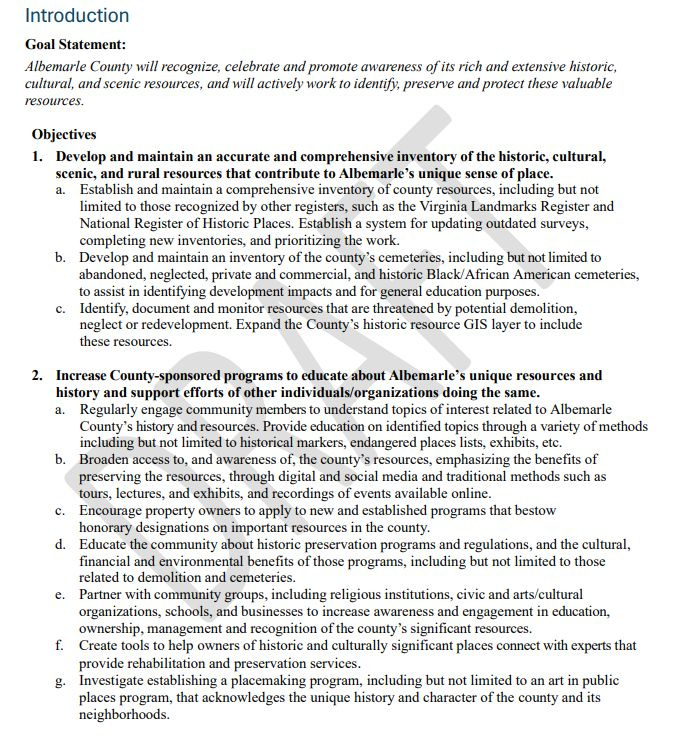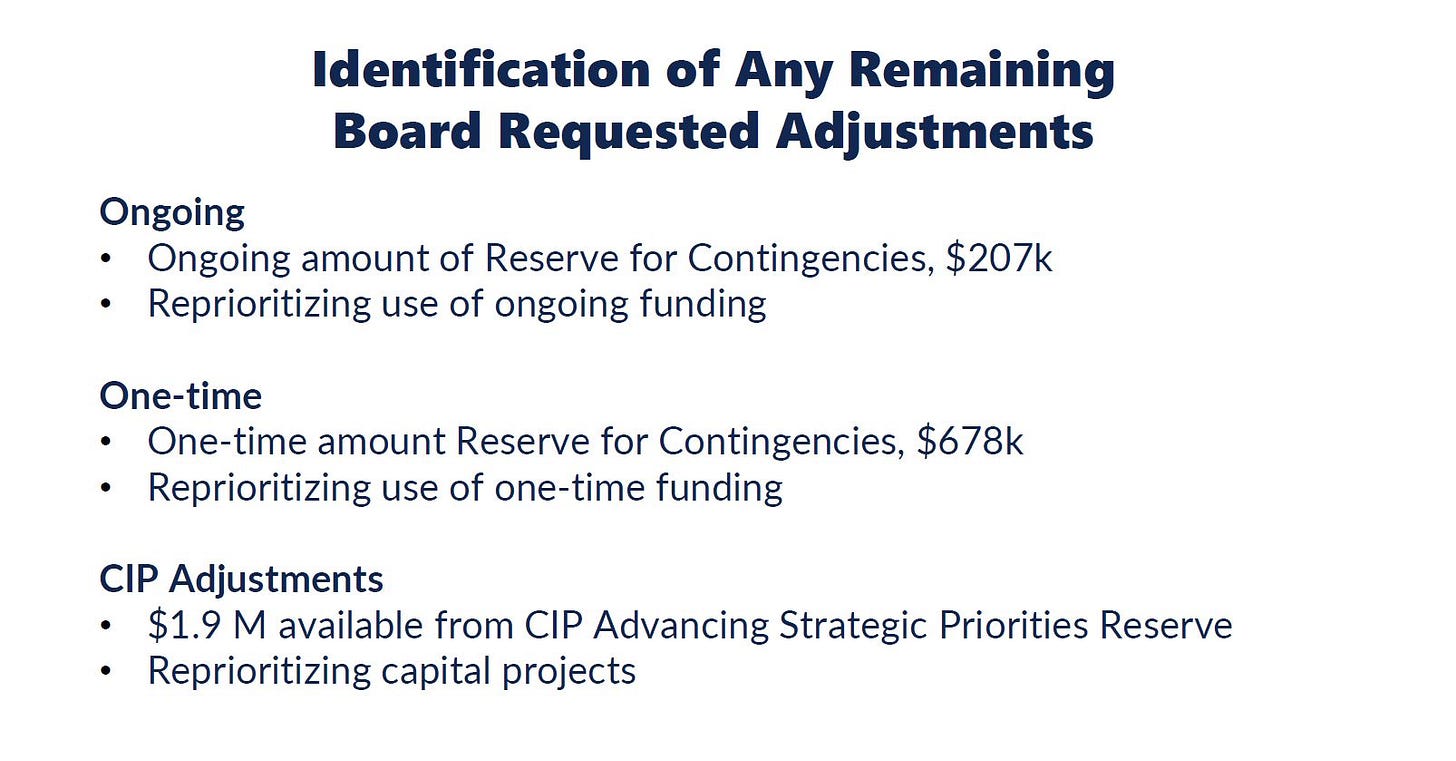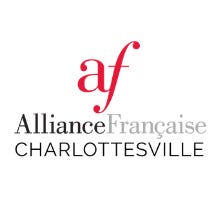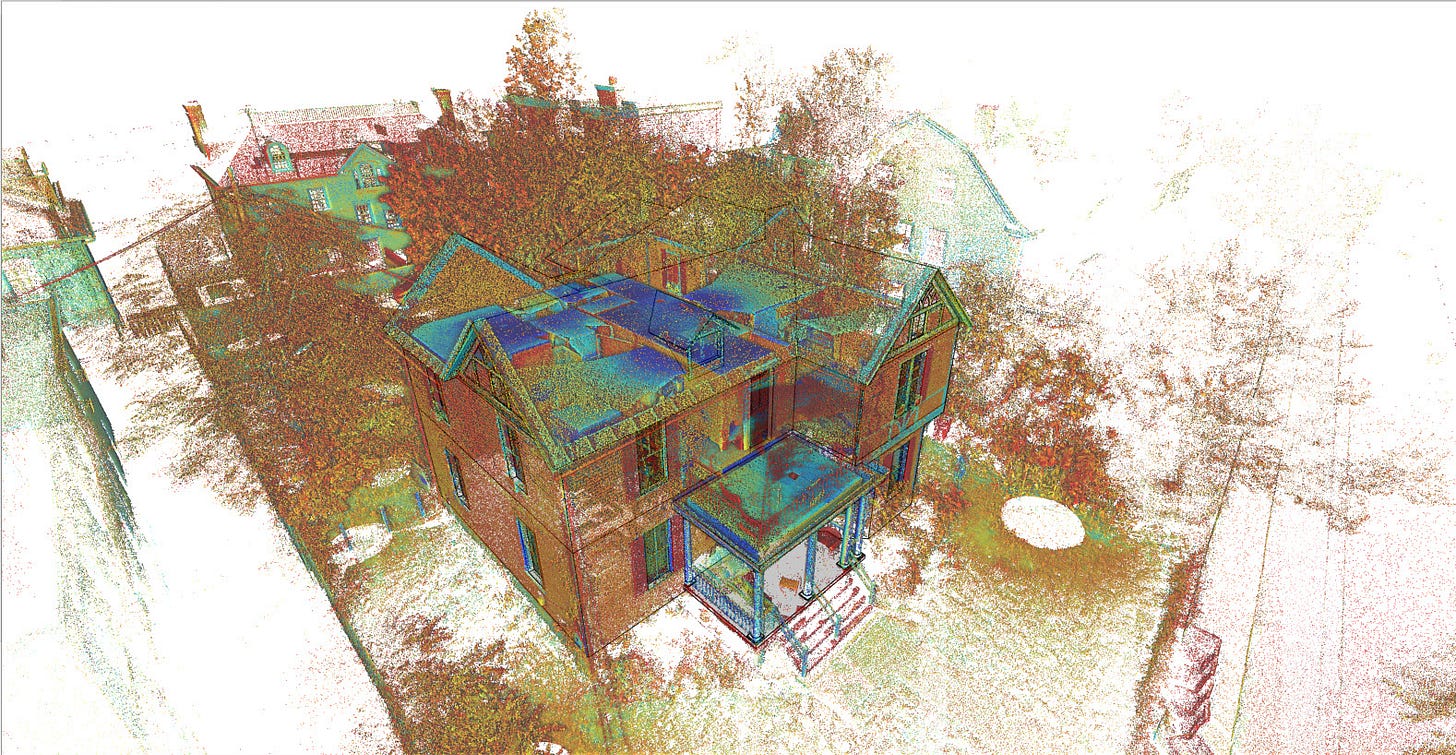April 8, 2025: Albemarle Supervisors vote to add $1 million to affordable housing fund in draft FY2026 budget
Plus: The Architectural Review Board takes a look at AC44’s Culture Resources goal and actions
A country that has lasted for nearly two and a half centuries goes through a lot of seasons, most of which are forgotten by those who come along later. Thankfully there are archives such as the University of Virginia’s collection of Charlottesville Daily Progress which reports from 130 years ago this April 8 that the United States Supreme Court ruled the income tax to be illegal. The 5-4 ruling in Pollock v. Farmers' Loan & Trust Company ended the federal income tax until adoption of the 16th Amendment in 1913. To understand the present, there are multiple sources to review. I’m Sean Tubbs, and I prefer research to doom-scrolling.
In today’s installment:
The Albemarle Architectural Review Board gets a preview of the Historic, Scenic,and Cultural Resources chapter of the AC44 Comprehensive Plan
Two stories on Albemarle’s proposed budget for FY26 including a decision to add an additional $1.2 million to the affordable housing fund
First shout-out: Alliance Française de Charlottesville
The Alliance Française de Charlottesville promotes the French language and francophone culture through educational and cultural programs. Visit the Alliance Française website to learn more about group classes, private lessons, cultural events, and social activities for both kids and adults.
Albemarle Architectural Review Board reviews draft actions for Comprehensive Plan
There are just over six months until Albemarle County Supervisors are expected to adopt a new Comprehensive Plan after just under four years of review. Eight out of eleven draft chapters are available for the public to read and provide comment.
One of the chapters left to be released to the public is the one called Historic, Scenic, and Cultural Resources. Staff presented some of the draft actions to the Albemarle Architectural Review Board at their meeting on April 7. (review the draft Cultural Resources goal statement, objectives, and actions dated March 28, 2025)
“The way this work went, there was some text for each of the chapters provided months ago that you all looked at,” said Margaret Maliszewski, a planning manager with Albemarle County. “And then we looked at goals and objectives. And so now we're sort of at the next step where we've got the more detailed action steps.”
The Historic Preservation Committee has already taken a look at this information.
The goal statement reads as follows:
“Albemarle County will recognize, celebrate and promote awareness of its rich and extensive historic, cultural, and scenic resources, and will actively work to identify, preserve and protect these valuable resources.”
The ARB reviews projects within Entrance Corridor Districts in order to grant required Certificates of Appropriateness. Objective 5 perhaps pertains the most and and action H in the draft calls for an expansion of “opportunities for streamlined review of ARB applications, including more categories of staff-level review.”

ARB Member Frank Stoner asked if staff had any ideas for what that expansion might look like. Maliszewski said there are none at this time.
“The way that would work is either either you all would have ideas for ways to do that or staff would come up with that and then we would bring it to you and then it would move back up to the, to the board for approval,” Maliszewski said.
The draft of the chapter is not yet available. Maliszewski said one item that will be explained are the difference between scenic by-ways, scenic highways, and other road designations.
Objective six of the draft chapter gives the county more moral weight toward any future plans to preserve dark skies. This object reads: “Reduce light pollution to protect and enhance the dark sky while balancing the need for a safe environment.”
Maliszewski detailed some of the actions.
“6A is about updating the lighting ordinance and B, lead the protection of dark skies by designing and implementing lighting for county facilities that are energy efficient and dark sky friendly,” Maliszewski said.
Objective 1 in the draft plan calls for an “accurate and comprehensive inventory of the historic, cultural, scenic, and rural resources that contribute to Albemarle’s unique sense of place.”
Albemarle County does not have a historic protection ordinance and there are no requirements preventing demolition of historic buildings.
“There might be some resources out there that have some protection through conservation easements, or there could be conditions of a special use permit or rezoning, but I don't think those numbers are very high,” Maliszewski said.
Objective 3 calls for study of more ways to increase the number of places under historic protection.
More on AC44 hopefully this week with a story on the Planning Commission’s discussion on the Housing chapter.

Albemarle Supervisors skeptical of proposal to use dedicated housing fund proceeds as debt service
Recent editions of the newsletter have featured stories on Albemarle County budget that document meetings from the recent past. Today’s edition concludes with at least one story from the April 7, 2025 budget work session.
“We have a few topics but we're going to spend most of our time talking about affordable housing and the [Capital Improvement Program] to continue the discussion or kind of an idea that began at the last budget work session on March 19,” said Andy Bowman, the chief of the budget.
That idea was whether the county had more capacity to borrow money to invest in affordable housing projects.
Supervisors had canceled one scheduled for March 26 after agreeing on March 19 to advertise increases in the real property tax rate and the personal property tax rate. The real property tax rate would increase by four cents, with 0.4 cents going to the affordable housing trust.
At the start of the April 7 work session, Chief Financial Officer Jacob Sumner went back to a basic concept in affordable housing. Affordable housing is on a spectrum.
“There [are] multiple needs at different levels on the affordability spectrum,” Sumner said. “As we've talked before, there [are] many tools that can be used to address affordable housing on these different levels within the affordable housing spectrum.”
The bottom axis of this spectrum begins on the left from 0 percent to 30 percent of the area median income, a population that may need access to emergency shelters or transitional housing. This extends up to workforce housing which is needed for households making up to 120 percent of area median income.
The 0.4 cents will be the first time there will be a dedicated stream of revenue for the county’s affordable housing investment fund. Until now, the fund has been fueled by one-time money from various surpluses and carryovers.
“Some of the past uses of the Affordable Housing Investment Fund has been our investment with Virginia Supportive Housing [at] Premier Circle, our investment in the Southwood redevelopment, phase one and phase two with Habitat,” Sumner said. “And then also in the Southwood Redevelopment area, the Hickory Hope Apartments with Piedmont Housing Alliance.”
As chief financial officer, Sumner is responsible for providing guidance on the mechanics of the county’s use of debt to invest in infrastructure. There are guidelines and proposals and so far there is no precedent for the county itself taking on debt to pay for housing projects.
“Borrowing for full housing projects would be new for the county, but also be new across the state for many localities, many counties in particular,” Sumner said.
In Virginia, counties and cities often have different powers. Charlottesville does contribute funding to affordable housing projects, but payments to groups like Habitat for Humanity and the Piedmont Housing Alliance are in the form of cash because those are private developments.
Payments for projects run by the Charlottesville Redevelopment and Housing Agency can be paid for through debt service because CRHA is a public organization whose infrastructure is public. The bonds that are sold are tax-exempt which limits their use to public facilities.
Sumner said if Albemarle were to borrow money for housing, they could use the proceeds to make grants, pay for infrastructure such as roads or water lines, or purchase land.
“If the Board wanted to borrow funds to help invest infrastructure related to development for affordable housing projects, as long as in the end what we expend those funds on is related back to a public facility, that would be an eligible expense for borrowing,” Sumner said.
The county could not borrow money to establish a revolving loan fund.
A question before Supervisors is whether that 0.4 cents could be used for debt service to pay for affordable housing projects in order to leverage funds.
In Option A, the full $1,239,203 in FY 26 would be used as direct payments to those providing housing for a total of $6.834 million over five years.
In Option B, half of the 0.4 cents would be used to pay for debt service which Sumner projected would over five years would generate a potential $7.325 million in bond revenues which would be paid off over 20 years.
In Option C, the entire 0.4 cents would be used for debt service which would enable $14.65 million in one-time bond proceeds. That would require the 0.4 cents to be dedicated to debt service over 20 years.

Supervisor Mike Pruitt said both Option B and Option C seemed like bad ideas. He wants Supervisors to create a plan to increase the amount of dedicated money from Albemarle for housing projects to $10 million a year as has been requested by a coalition of advocacy groups. He said using the money for debt service would make that more difficult.
“I feel like we're looking at this and we're all interested in this because we want a shortcut,” Pruitt. “And I think the reality is there isn't a shortcut period other than like knuckling up and having the political will.”
Pruitt said he wants there to be enough money for the county to be able to step in and work to purchase an apartment complex that may be on the market to be converted to luxury apartments as with happened with the former Cavalier Crossing apartments. (read a story)
“If we actually had a land acquisition policy, if we actually maybe updated our blight policy to include a thought for the acquisition of land and… building our own social housing, right?” Pruitt said. “That's what CIPs for housing are used for.”
Pruitt said he recognized the rest of the Board might not have the appetite to get into that business. He suggested later in the meeting it would mean increasing the real property and property tax rate and dedicating more than 0.4 cents per $100 of assessed value.
Supervisor Diantha McKeel said she is concerned about the economic landscape and the ability for the county to get to $10 million a year is complicated. She suggested the county instead pursue another initiative.
“This board could look at acquisition of land,” McKeel said. “We have that blight ordinance. I think looking at some of that is a much more viable option certainly right now, given where we are.”
Supervisor Ann Mallek suggested that the county would work with partners and not go it alone. She wanted to continue to find a way to leverage county funds with funding from philanthropic agencies.
“My goal is to try to figure out a way to get structures, bricks and mortar, for the taxpayer money that is going in to help the people that don't have any houses of any sort,” Mallek said.
Supervisor Jim Andrews said he would prefer not to focus on an annual funding amount but instead another metric.
“We focus so much on $10 million and we should focus more on how many units we expect to get built and how will we accomplish that?” Andrews asked.
Andrews suggested using tax-increment financing arrangements for eligible projects.
Supervisors did not make a firm decision on how to proceed on April 7. Toward the end of the conversation, Sumner returned to the idea of the continuum to explain why staff brought the three options forward.
“One of the reasons why we brought back the housing continuum is to show that there are multiple tools that will need to be used to address affordable housing in our community,” Sumner said. “And this is a tool we hadn't explored before, really discussed with the board before, but it is a tool and we kind of walk through with the trade offs-are and how we could utilze that tool if the Board wanted to use that.”
Second-shout out: Design Develop
In today’s Patreon-fueled shout-out, architectural firm Design Develop is offering a new service aimed at the development community that the rest of us might want to know about , too — 3D point cloud scanning! This technique uses specialized equipment, such as 3D scanner systems, to gather a large amount of data points that represent the surface of the scanned object or scene. This really comes in handy when working with historic structures, as the firm knows from its experience in Baltimore and Charlottesville. Read their blog post for more information!
The applications of 3D point cloud scanning are extensive and cover various fields, including architecture, construction, cultural heritage preservation, virtual reality, industrial design, manufacturing, and more. These applications require accurate 3D spatial information, and Design Develop’s workflow provides precise and comprehensive results, all while being more cost-effective than traditional methods.
Design Develop has expertise in this workflow for their own needs and now has a dedicated team offering this service in the Charlottesville and Albemarle Area. If you're involved in the real estate, design, or construction industry, contact them for more information or a free quote.
Visit their website for an introductory video that captures the 3D point cloud scanning of the Downtown Transit Center and a booklet that will explain more!
Albemarle Supervisors vote to add another $1 million to affordable housing fund, $200,000 to emergency fund in FY2026 budget
A final vote on Albemarle’s proposed budget for FY2026 isn’t currently scheduled until May 7, but there were several straw polls taken at the end of the April 7 work session.
“The final topic for today's agenda is really just the identification of any remaining board adjustments to the budget,” said Andy Bowman, the county’s chief of budget. “May 7 is when the board will approve the budget. I think a lot of this is our role as staff to support the board supervisors as they make these decisions.”
Bowman said that means staff has to know if there are any big decisions they wanted to make that might alter the final composition of the FY2026 budget.

Supervisor Ned Gallaway offered a suggestion to move $1.2 million from the Board of Supervisors strategic reserve to the affordable housing fund. After some discussion he made a motion to do so that was seconded by Supervisor Ann Mallek.
“So we have 1.2 coming from the 0.4 cents dedicated. And then we had roughly $3 million coming from one time monies,” Gallaway said. “So that's 4.2 million. This would move it up to 5.4 million.”
After discussion about the desire for some to produce additional funding to Albemarle’s Emergency Relief Program, Gallaway withdrew his motion and allowed Supervisor Michael Pruitt to introduce a similar one.
“I would like to move that we reallocate $1.2 million from the Strategic Priorities Reserve, allocate $1 million to the Albemarle Housing Investment Fund, and allocate $200,000 to ACERP, the Albemarle County Emergency Relief Program,” Pruitt said.
That motion passed unanimously.
Pruitt made another motion to reallocate $1 million that had been intended for an economic development fund toward the housing fund instead. Supervisor Gallaway pointed out those funds can be used toward affordable housing projects. That’s happened before at Southwood.
Pruitt’s motion did not get a second so it was not considered.
As proposed, another 0.4 cents from the 4 cent property tax rate would go to the school system. Mallek made a motion to put that toward the housing fund instead. This also did not get a second.
Then Supervisor Bea LaPisto-Kirtley made another motion to further amend Pruitt’s successful motion to shift the balance to $800,000 for the housing fund and $400,000 for the emergency fund. Pruitt provided a second, but the motion failed on a 3 to 3 tie vote. Unlike the Board of Supervisors in Halifax County, there is no tie-breaker.
There are three remaining budget town halls left and the information will be updated to reflect the Board’s decision
Supervisors will next meet on April 16.
Reading material for #844
Several plans call for tunnels beneath area railways, but none under active consideration, Sean Tubbs, C-Ville Weekly, April 4, 2025
DEQ expands drought watch advisory, CBS19 News, April 7, 2025
UVA Health expanding pharmacy services with new facility in Albemarle County, Jacob Phillips, April 7, 2025
The end of #844
I much prefer it when I get to stories in a timely fashion. In my ideal world, each edition of this newsletter would be about 6,000 words of content. I’d love to get to stories more quickly, but for now it’s just me.
What will the future bring? I don’t know. I know I get more efficient each week and now that I am traveling less, I’m able to devote more of my time to this work. That has allowed me to relaunch Fifth District Community Engagement and to add a second story for C-Ville Weekly each week.
My hope as I do this is that readers will begin to do some of their own research, too. A democracy requires community members who can understand the many trade-offs at stake when there are decisions to make.
I selected this role over thirty years ago, and ended any considerations of a political career back in 1992 when I decided that spending my career writing information required me to take a different path. And here I am, pleased that I’ve written about an Albemarle County budget work session less than 24 hours after it concluded.
I finished the story on the ARB meeting about four hours ago, so that counts, too!
I’ve also recorded the City Council meeting from yesterday, a meeting of the House of Delegates Emergency Committee, and I’m about to hit record on the Planning Commission’s meeting. I’ll get to as much of this as possible.
To what end? I don’t really know. I know this is the work I want to do and what I’ll do until I become a memory. It seems important, because local government should not be mysterious. I want everyone to understand this stuff and so this is what I do.
I conclude with another meeting I will pull into my audio editor - today’s meeting of the Nelson County Board of Supervisors!







